Originally published at: A TRUE TEST OF THE SCOTT ADDICT RC PRO - Slowtwitch News
Up Front – 400+ miles, 43,000 feet of climbing. Yes, I actually spent a good amount of time on this machine. Intro CliffsNotes: A bike that felt FAST and functional, despite its lightness. For testing I used two different routes – the flat circuit around my house and the mountains near my home.
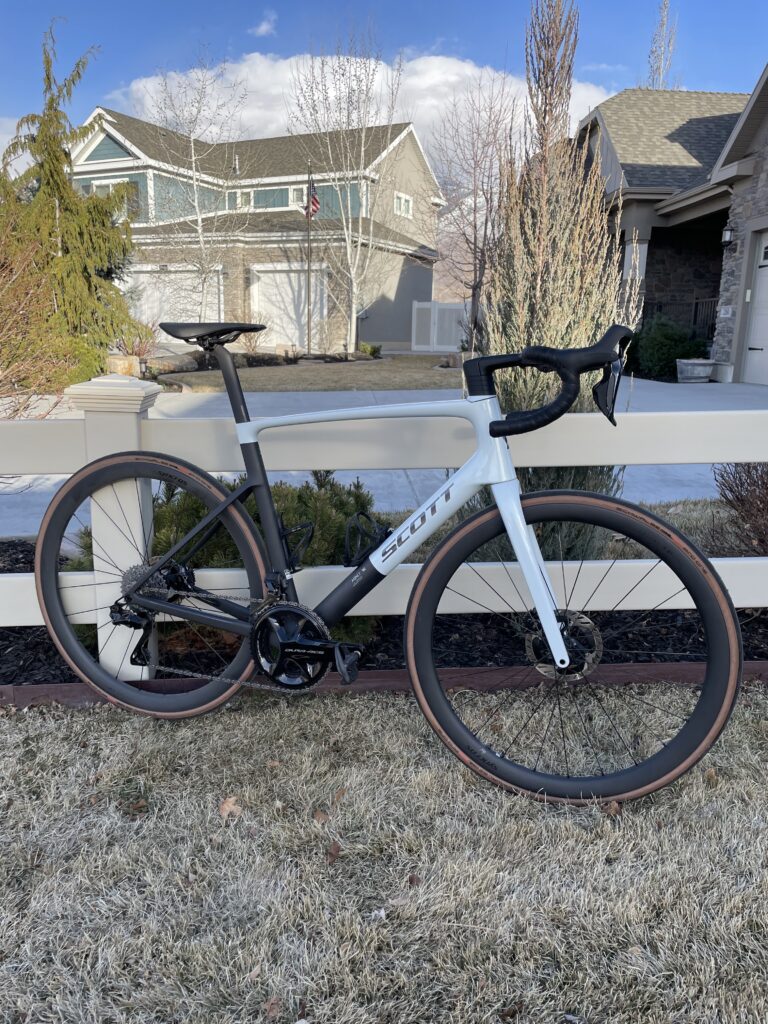
The bike features nice, checkerboard-contrast paint, which included a subtle pearlescent white (the glint not apparent on this particularly dull winter day) paired with a matte black. The components were Dura-Ace Di2 – what else would it be? It feels light, but when you choose to ride a 108 lb cargo bike with as little pedal-assist as possible, weight is noticeable, but not paramount. At first it’s easy to think this is too elegant to be an all-rounder – the triangles and geometry are traditional and the tube shapes and junctions, while stocky, don’t suggest an aero bike. Fully integrated, the internally routed hoses strummed the occasional bass note when the roads got rough. Understated in color choices and tones, the occasional glint of the pearlescent ivory paint reminds you that this bike is as charming as it is all business.
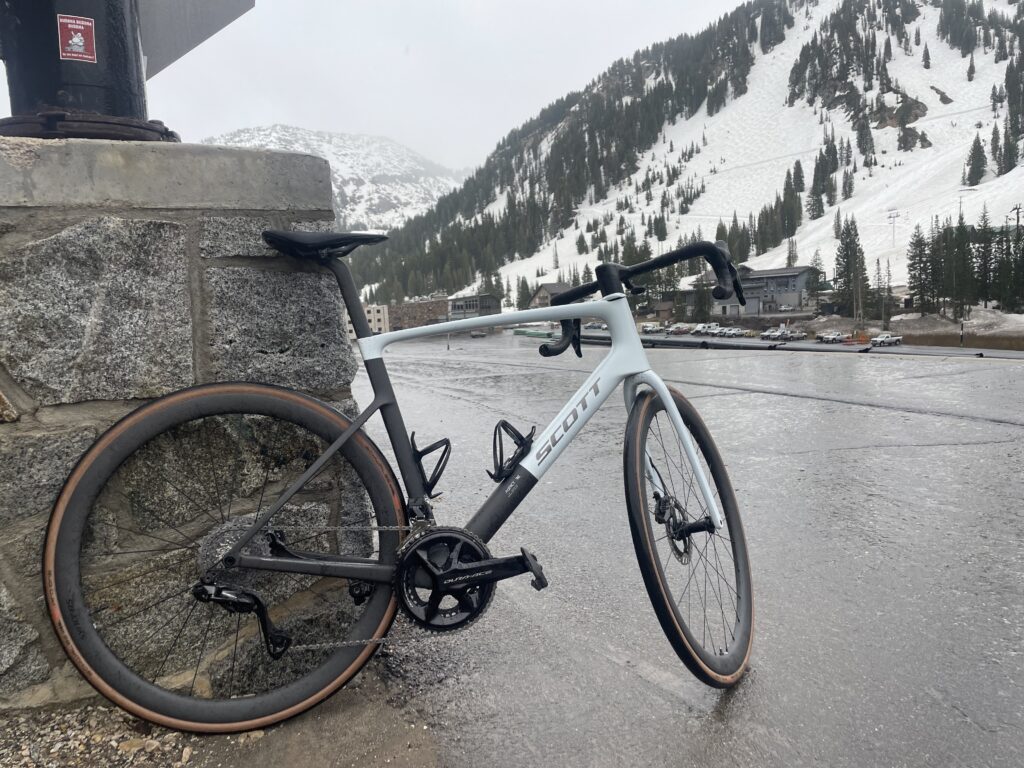
Enough poetry – let’s dive in.
FLAT HOUSE CIRCUT
The cycling mode of my GPS defaults to a lap at five miles. I use a five-mile circuit of right-handers and more-or-less equal exposure to all directions that finishes at a stop light so that I can ride uninterrupted regardless of traffic or wind conditions. The loop helps me gauge how I might do that particular day of riding based on time, HR and RPE. If I’m pushing 15 minutes and panting, it’s probably better to cruise, but it’s game on when the lap rings in a 13 something and I wish the light hadn’t stopped me. The first ride with the Addict I let the emotions of the new bike drive me – sitting nicely “inside” the bike, enjoying the 30 mm tires (measured to 32) and the quiet of a Sunday afternoon. 13:36 and a red light – I was feeling great and also realized this was TT-bike speed.
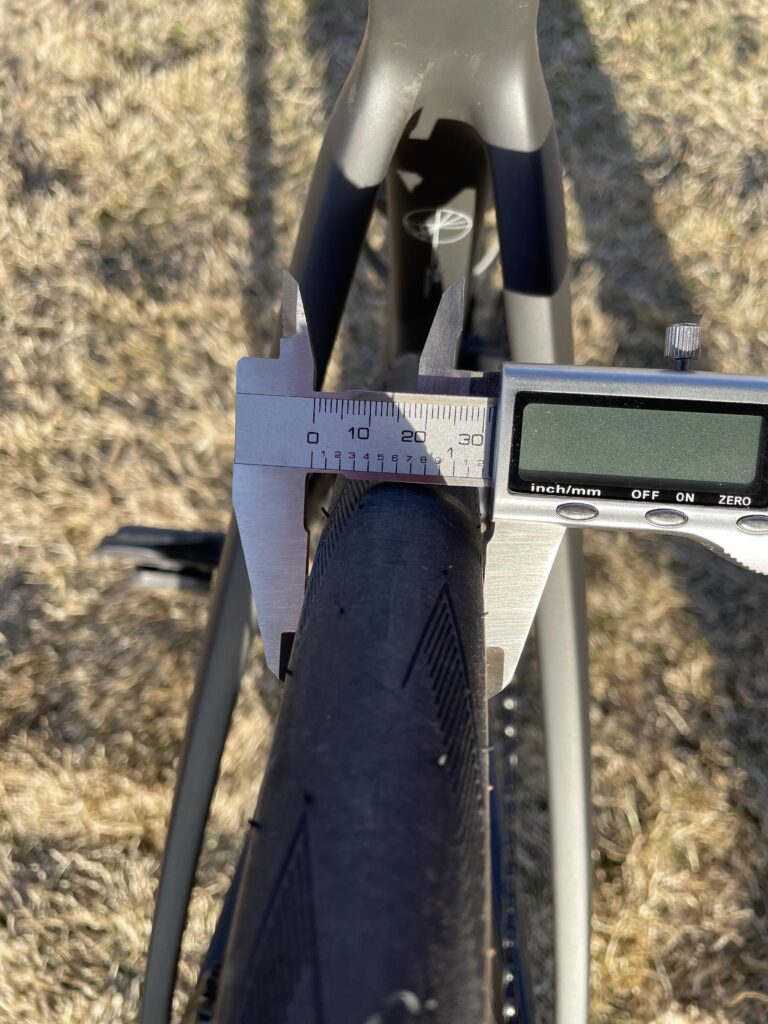
The rest of the ride was paced with equal effort and the first words I had to message back to the bike’s patron were “This is fast!” Coincidentally, I happened to see that the Chris Miller Cycling Youtube and Escape Collective Geek Warning were both talking about this bike, too. Giving both a listen, I felt dumb that I anchored on the virtues of going fast with a bike that sits in the climber / all-rounder category.
TO THE HILLS
A test of a climbing bike can only happen when the mountain is free and other distractions are pushed aside. The season is finally appropriate for riding a climbing bike in its intended environs, namely uphill. The mountain-west is where a bike like the Addict needs to be ridden, but only when the snow at higher elevation has thinned and the late spring weather provides some certainty of warmer breezes and longer days. IRONMAN 70.3 St. George had come and gone, along with the need to labor away on the TT bike. I had ridden the Addict enough on my fast valley circuits, impressed by its propensity for speed, however, a ride in anger up some categorized climbs was long overdue. Little Cottonwood Canyon, to the top, is where I had to go – not the biggest or longest, but accessible following a short ride out my front door and something I could complete with the few hours I had in the late afternoon. I longed for that photogenic afternoon with vibrant green aspen and gamble oak flecking the rocky canyon draped in steel blue. Instead, I was pressed on from behind by impending thunderstorms (of which I was largely ignorant). The mountain’s peaks are hidden in cloud that blends in with the messy snow lacing the gulches in view. Largely quiet, but still often offended by the smell of burning brakes, I couldn’t help but be reminded of the grey visual I imagined when I read Shelley’s prose of Dr. Frankenstein chasing his creation through a Swiss alpine glacier. The thoughts and sensory experience one can have while climbing effortlessly at 1000+VAM is remarkable. Negotiating the few ramps in the climb, the chain climbs and slips off the 54-tooth chainring accompanied by the simple whirring of the Di2. I prefer to ride my climbs seated (maybe generational?) and I can achieve a comfortable position, clutching the monocoque cockpit adjacent the stem and simply sitting tall off the saddle. No extreme adjustments fore or aft are required, and no need for nose riding on all the stock standard parts. After three fourths of a meditative climb, serenity and rhythm turned to panic and indecision when the first fat drop of rain lands on the helmet, followed by many that left my brow more wet than it would be simply from sweat. For the entire afternoon the sky was heavy with cloud and I was blissful enough to think I had escaped the worst. Who among us is resigned to simply turn around when the summit is “just around the bend?” I continued, hoping that the rain was simply a local cloud burst. At 8,600 feet I pulled the plug, took a photo – grey bike, grey sky, wet road – donned my vest and realized the wet cold descent was an exercise in vigilance and 101 bike control. I had thoughts of shiver-induced-speed-wobble on my mind. I thought of a slide across a wet gritty road initiated by grabbing too much brake on the wet off-camber. I thought of how grateful I was for being able to turn the pedals again and not having to grip the top tube with my knees. I got home and was disappointed that I got the bike as dirty as I had, and was committed to a redo.
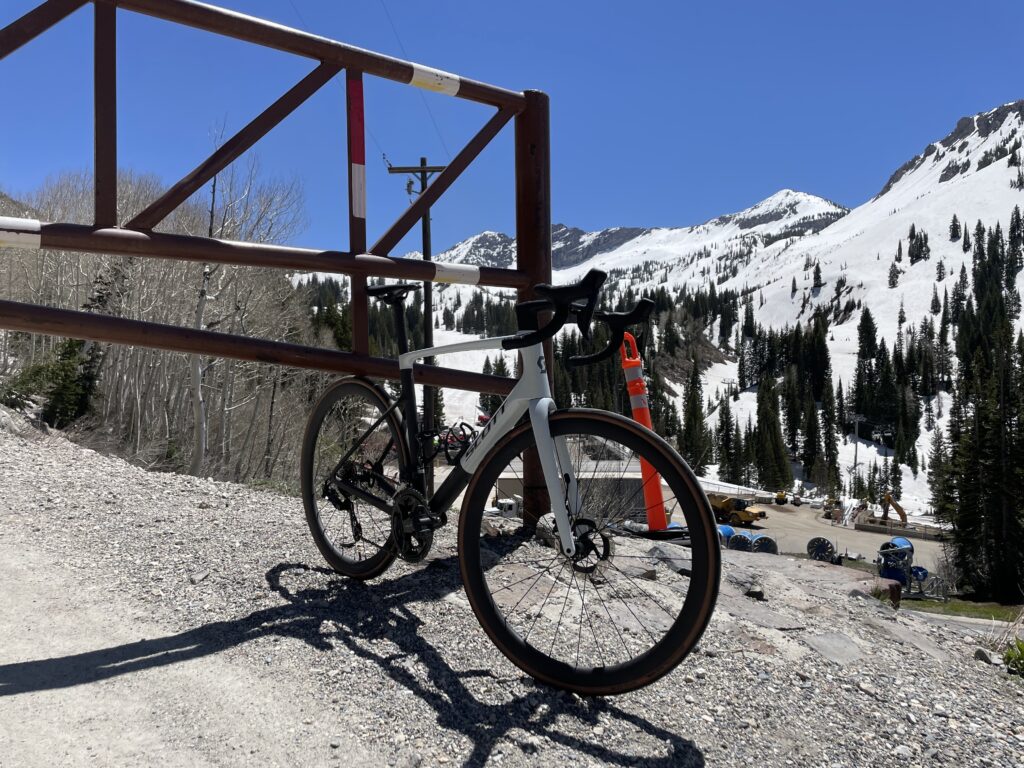
On a beautiful day the following week I climbed the same route, to its true end a few hundred feet higher in elevation and at an average speed almost a whole 1 mph faster. The climb, uninterrupted by the pall of rain and doubt, ended on my terms and the gate symbolized the end of the tarmac. Pidcock happens to ride this bike – do I descend like him? Absolutely not. Did I channel Tom as kept ahead of the cars on my six? Absolutely! Square over the saddle, back flat with hands in the drops and single digits on the brakes the flowing grind into the valley could only have been better were I able to cut corners and not worry about the cars that might be behind me.
Wheels and tires …
Are the house-brand Syncros Capital 1.0S 40mm
Carbon fiber, hookless, 40 mm height, 25 mm internal width with a a combined wheel weight of 1,160 g. Fitted with Schwalbe Pro One’s, 30 mm width. The wheels, aesthetically, are understated with the embossed branding barely legible, which adds to the sensibility of the bike. I think the shape and depth look good and the traditional build lends to their practicality. However, I had to look up what the wheels were on the bike’s spec sheet because I had not heard of them until I was introduced to the bike. I was surprised to learn the wheels were hookless – I had flirted with the 72 psi limits of the tubeless system when I first inflated the tires. When riding modern bikes, I do need to make sure I know what I’m using before I get too far! Tempering pressures to a more suitable +/-60ish psi, I measure the tires to be 32mm.
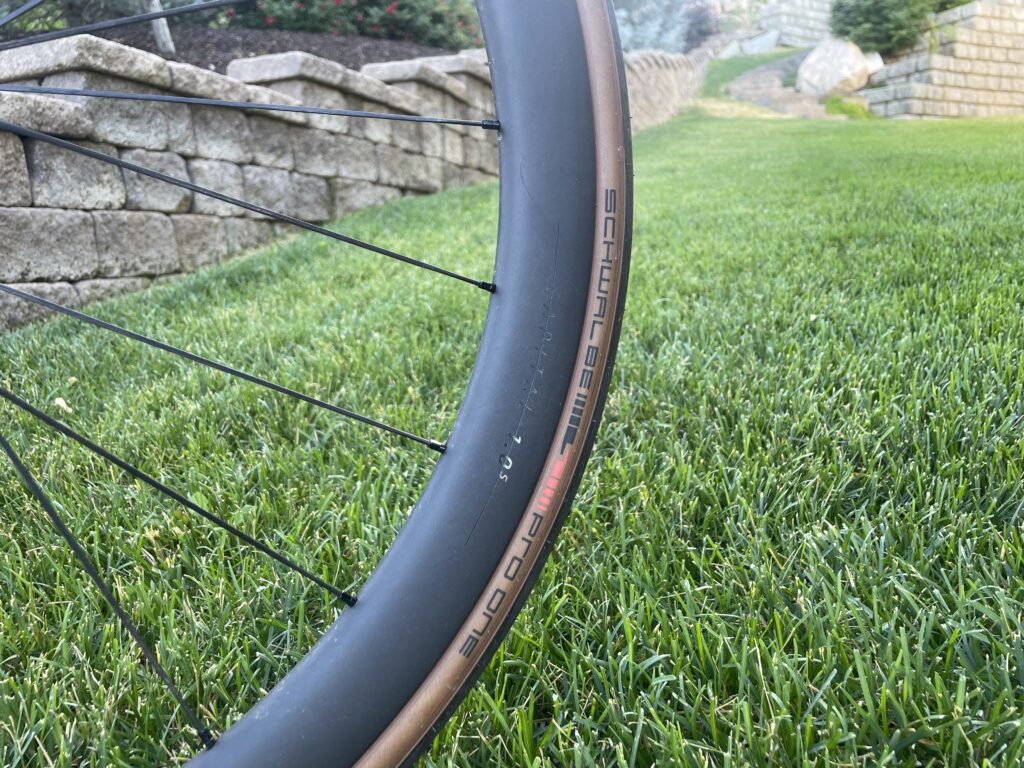
Touch points work well and promote the aero position of the age with an ample flat, continuous area across the bar and to the hoods. This also lends itself to the “sharp elbows” I’ve made comments on with handle bars before (as this retro-grouch reminds himself that the future is out of my hands now). The stock width suited me well and bar ergonomics are diverse enough to support riding on the hoods, traditionally across the bar tops or drops and standing while wrestling the bar ends. The cockpit was maxed out with spacers, so the some of this may change depending how low a rider may chose to go.
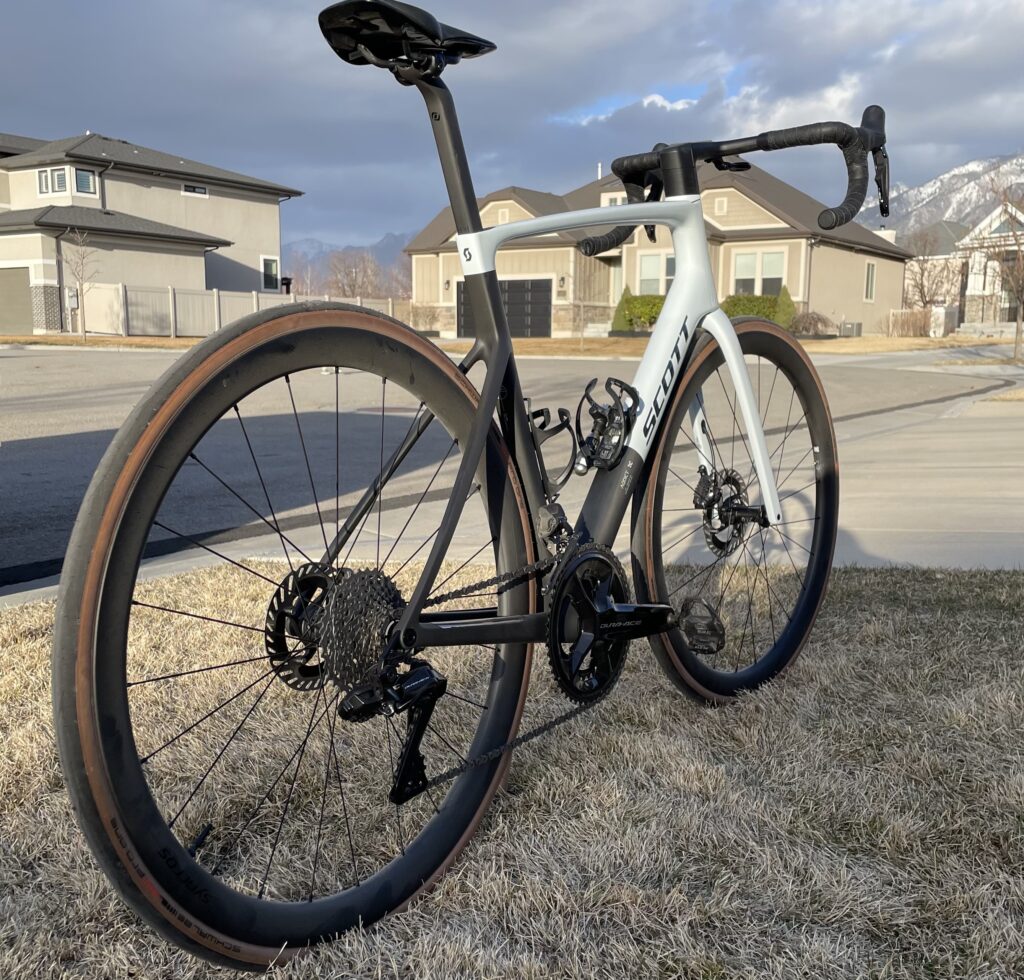
The Addict has an appropriate amount of integration and functionality, without complicating the intent of the bike’s ultimate objective (lightness!) with integrated storage. A diverse multitool with CO2 is tucked in beside the downtube bottle cage and can be removed if desired. A limited torx wrench set is integrated with one of the bar end plugs and only discernable through a slender protrusion. I’d recommend this plug stay with the bike at all times as the limited clamping devices are all secured with torx hardware. I am embarrassed to admit I fumbled with two sizes of hex keys for five minutes swearing at the bike attempting to lower the seat post. Only after shining a flashlight into the recessed slot did I see the familiar “star” glinting in the shadows.
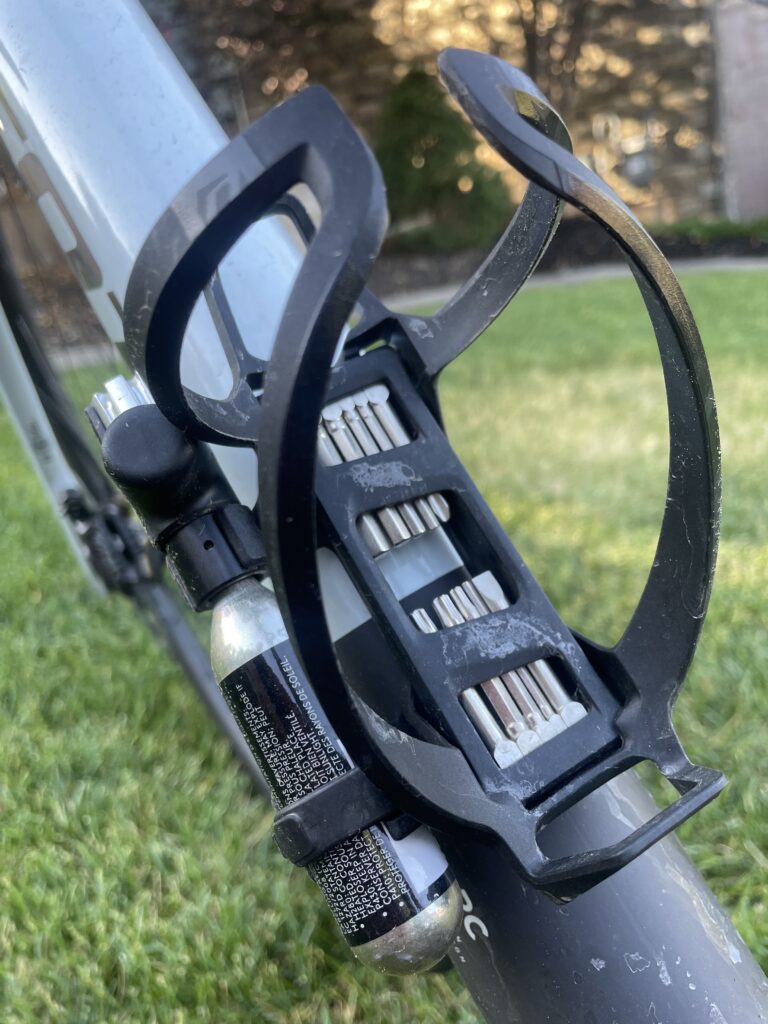
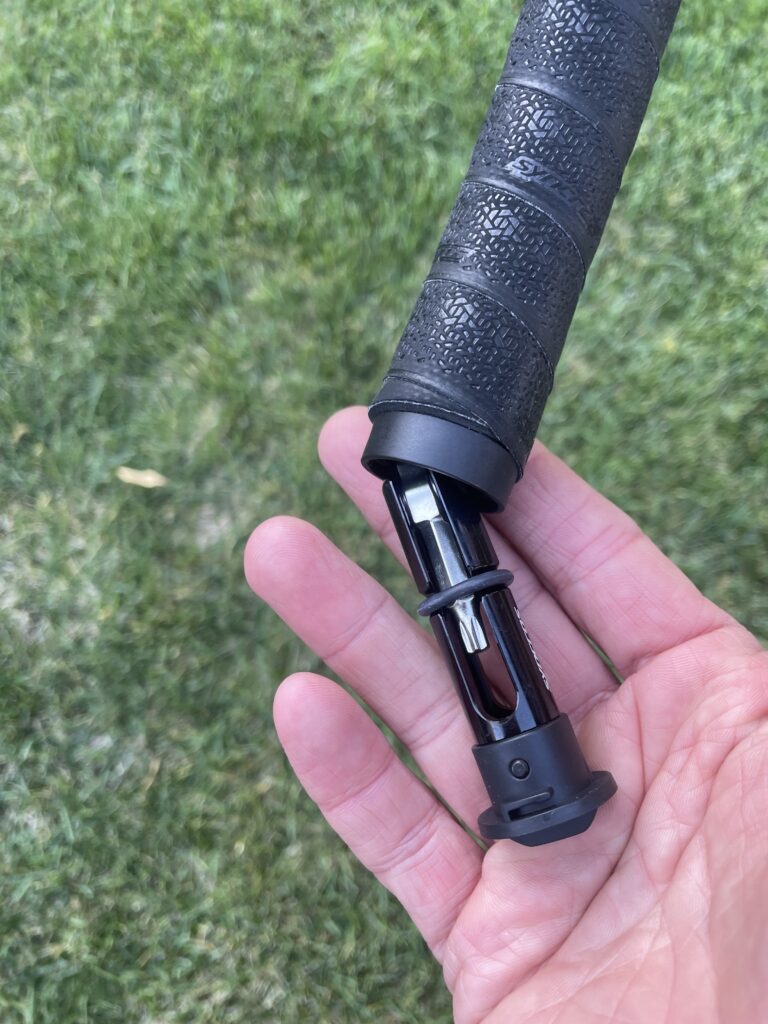
In Closing
The Scott Addict has changed my perception of what I thought I liked in a modern road bike. I was certain the aero race bike in the vein of a Cervelo S5 of Bianchi Oltre is what I want, but have never actually ridden. If I were to show you my bike browsing history you’d also see that I’m clicking through neo-retro builds of steel frames equipped with fat tires (relative) and mechanical Campy Record (btw – a neo-retro Legnano is the last bike I’d ever buy…😊…promise!). When I haven’t been concerned with training targets and race objectives, the Addict is what I’ve been drawn to, and maybe the versatility it offers, and my personal bike interests, can explain that. The two tone color treatment has grown on me and seems to belong – I could see a strong case for something in yellow!
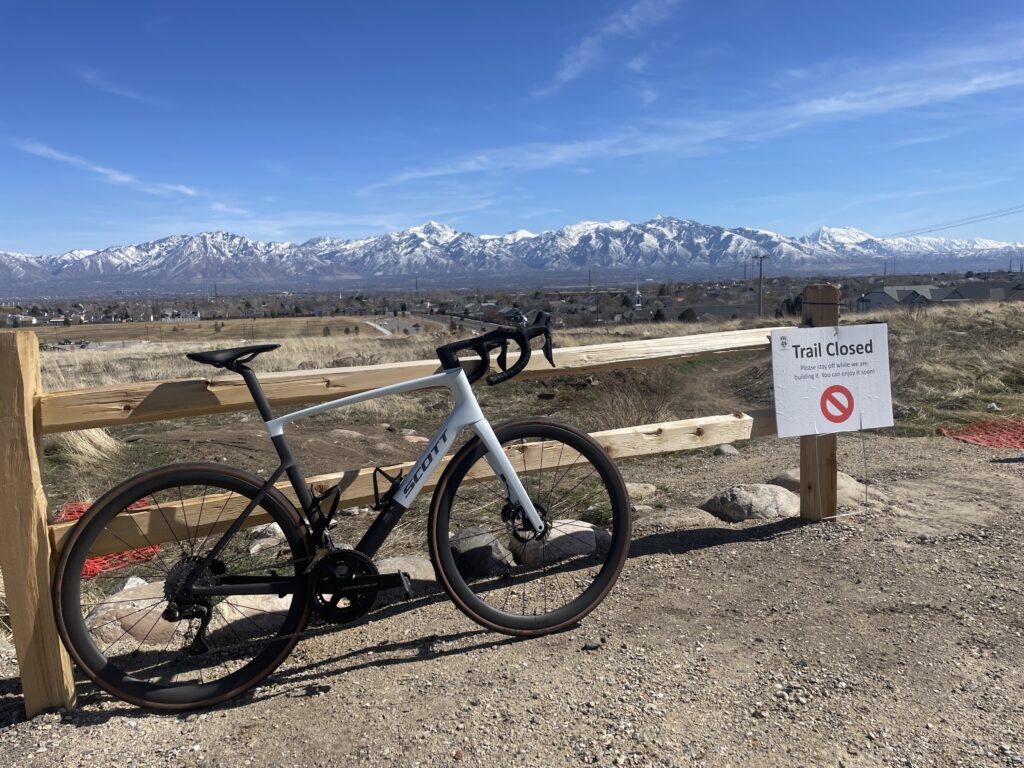
SCOTT ADDICT RC PRO Bike Specs
- Addict RC HMX Carbon Frame
- Addict RC HMX Carbon Fork
- Shimano Dura-Ace Groupset
- Syncros Capital 1.0S Tubeless Disc Wheelset
- Schwalbe ONE TLE-Tires
- Syncros Carbon Parts
- APPROX WEIGHT IN LBS – 14.99 lbs
- US Price $8,999